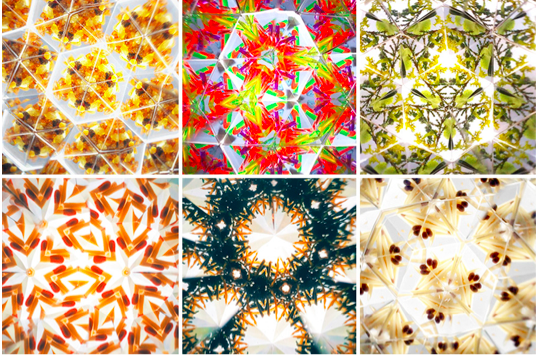Cultural Kaleidoscope
Posted on October 31, 2017
An idea from Julian Dibbell’s “A Rape in Cyberspace” struck me as an apt description of my TransD revelations thus far: after significant consideration, one of the LambaMOO residents arrives at a “hardly novel yet now somehow newly resonant” idea following the cyberspace crimes. I can relate.
It’d be an understatement to say TransD has already caused me to question my beliefs and assumptions. After two months of being immersed in readings, conversations, and endlessly spiraling inner thoughts, I’m left with a profound questioning of the role of culture in influencing our understanding of the world and our ability to develop design solutions to some of our greatest problems.
I’d always considered culture to be the attitudes, customs and beliefs that make each country or people unique. Now, I imagine it less as a unique perspective each of us brings based on where we come from and more of a filter through which we view the world—influencing everything we experience and often in ways more subtle and pervasive than we imagine. Coming from different cultures means we literally see things differently.
It follows how easily we make assumptions contingent on our cultural lens; it can be difficult to gauge the depth of the assumptions that inform our worldview when we’re trapped within them. Anisah Abdullah elucidated this recently in a session she hosted here at Parsons, based on learnings from a workshop she ran with the Dankawalie Secondary School in Sierra Leone. The workshop goal was to develop a narrative for the future of the school in ten years, but that goal was quickly compromised because the fundamental idea of framing time as a linear progression was a challenge to the participants (an even greater challenge than the severe language barrier between them and the facilitation team). They were accustomed to situating time relative to events and other intangible elements, rather than a strict progression of linear time, which made it difficult to create a chronology or timeline of events according to a Western framework of time. The success of the workshop depended on in-the-moment acceptance of a different method of organization and later re-examination not only of time, but also of the blind spots and assumptions that led to only considering a single conception of time.
Not only have we seen evidence that different cultures perceive the world differently, but we’re also beginning to be able to tap into different perceptions on a neurological level with brain imaging. Recent studies in cultural neuroscience have started to investigate these ideas with fMRI technology to further our understanding of the way beliefs translate into physical differences in brain activity and information processing.
One example comes from Denise Park’s lab of behavioral and brain science at the University of Texas, which recently conducted research on image perception with American and Chinese participants. Their research used fMRI to examine brain activity as participants viewed a series of images with a central object superimposed on either a congruent or incongruent background (e.g. a dolphin jumping out of the ocean vs. a swimming pool). The results showed that Chinese participants’ perceptual areas of the brain reacted more strongly to objects in incongruent scenes, indicating greater sensitivity to context on a neural level in line with their collectivist culture. By contrast, the more individualist culture of American participant manifested in a tendency to focus more on the central image and be less attuned to differences in the congruence of the background image.¹
A review of recent research in this realm has concluded differences in brain activity are not based in structural differences, but in cultural shaping of neural firing and function.² Studies also suggest that these effects are not as strong among younger participants, as younger generations are more exposed to a variety of viewpoints and do not remain as closely tied to cultural traditions.³ The ability for brain activity to be shaped by culture nonetheless challenges our day-to-day assumption that experience of the world is synonymous with reality, rather than open to subjective interpretation or influence.
Considering the implications of culture is just one of the ways that reality is complicated and solutions are slippery; better understanding the nature of wicked problems and even attempting to approach wicked solutions will require a fundamental reassessment—or at least a willingness to revisit—some of our most basic instincts about making sense of the world around us.
¹ Jenkins, Lucas, Yung-Jui Yang, Joshua Goh, Ying-Yi Hong and Denise Park. “Cultural differences in the lateral occipital complex while viewing incongruent scenes.” Social Cognitive and Affective Neuroscience 5.2 (2010): 236–241. 23. Oxford Academic. Web. 23 October 2017.
² Park, Denise and Chih-Mao Huang. “Culture Wires the Brain: A Cognitive Neuroscience Perspective.” Perspectives on Psychological Science 5.4 (2010): 391-400. Sage Pub. Web. 23 October 2017.
³ Azar, Beth. “Your Brain on Culture.” Monitor on Psychology 41.10 (2010): 44-47. American Phsycological Association. Web. 25 October 2017.